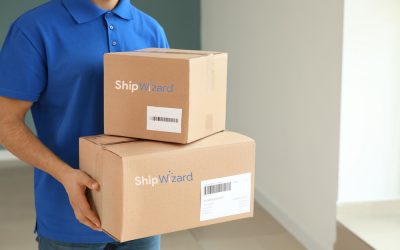
Are you a seasoned inventory manager? If so, the acronym FIFO – which stands for First In, First Out – might be a familiar term to you. Put simply, the items are sold in the order they are received in the store or warehouse. FIFO is the go-to inventory management approach for most eCommerce businesses. The goal is to sell off the older stock before the newer ones, which helps keep a steady flow of inventory moving. As a result, businesses are better equipped to maintain an optimal inventory level and ensure customer satisfaction. At ShipWizard, we use the FIFO inventory management method when storing our clients’ inventory and fulfilling their e-Commerce orders.
What is FIFO?
First in first out (FIFO) warehousing means exactly what it sounds like. It’s an inventory control method in which the first items to come into the warehouse are the first items to leave. Similar to the service industry concept of “first come, first served”, the FIFO method focuses on products. FIFO serves as both a method of calculating ending inventory value as well as a best practice to manage your inventory.
FIFO is also an accounting method: the cost of the oldest inventory items is matched against the revenue from the first items sold, which can affect the calculation of cost of goods sold and gross profit.
For instance, if your e-commerce business sells hats representing an NFL team. Let’s say you sourced the first 100 hats at a cost of $5 each. That is a total beginning inventory of $500. Now, let’s imagine that you decide to purchase an additional 50 hats. The price on the second lot has increased to $6 per hat, creating another $300 of inventory for the additional 50 hats. This brings the total of hats to 150 and total inventory cost to $800.
Coming up to the Super Bowl, as your team made it to the playoffs, your online store sells 80 hats. Under the FIFO accounting method, all 80 of these baseball hats would have been from the first 100 lot that was purchased at $5 each.
The FIFO Inventory Management Method
Under the FIFO inventory method, when goods are received at a store, warehouse, or eCommerce fulfillment center, care is taken to move the older merchandise to the front of the shelf and to restock the shelf from the rear. That way, the oldest merchandise at an eCommerce order fulfillment center is picked first. As such, FIFO is the term used to describe the physical flow of inventory through a business.
The majority of businesses use the FIFO method for inventory management because it ensures a constant rotation of stock. Perishable and seasonable goods are sold before they expire or go out of style, which reduces inventory losses.
The alternative to FIFO is the LIFO (Last In, Last Out) inventory method. Under the LIFO method, the newest units of inventory are stocked in front and picked off the shelf first.
3PL and FIFO
FIFO is a common inventory management strategy used by third-party logistics (3PL) providers. Thinking back to our example of an e-commerce store that sells baseball hats, under the FIFO method, your 3PL partner would be using the first batch of 100 hats to fulfill orders, before turning to the next batch of 50 hats.
In a 3PL environment, FIFO inventory management can be particularly important for companies that deal with perishable or time-sensitive goods, such as nutraceuticals, food and beverage, or electronics. Many 3PL providers consider FIFO inventory management the golden standard for ensuring the quality and safety of the products they handle.
Implementing FIFO inventory management in a 3PL requires several key steps. First, the warehouse must be organized so that products are stored in a way that allows for easy access to the oldest items. This may involve using specialized shelving, labeling, or inventory tracking systems. Additionally, the 3PL provider must have a clear understanding of the expiration dates and shelf lives of the products they are storing and must be able to accurately track and report inventory levels to their clients.
One potential challenge of FIFO inventory management in a 3PL environment is that it can require additional labor and resources to manage the inventory effectively. For example, staff may need to regularly check the dates on products and move older items to the front of the storage area, or they may need to track inventory levels more closely to ensure that items are being sold or shipped in the correct order.
Trust ShipWizard 3PL with FIFO Warehousing and More
Any conversion with a potential 3PL partner should include a discussion of how your inventory will be handled. If you are looking for a FIFO-based fulfillment company that will treat your inventory with utmost care and attention to detail, look no further than ShipWizard. As a premier fulfillment services and third-party logistics (3PL) company, ShipWizard works with companies of every size from a variety of industries to get things done with efficiency, flexibility and the highest level of service. We specialize in supporting clients who sell nutraceuticals, beauty, pet care, electronics and a variety of other products. With our strategically located East Coast and West Coast warehouses, we are able to deliver your orders to anywhere in the continental US within 2 business days. Request a quote today, or contact us to discuss your fulfillment needs as well as inventory management questions.









